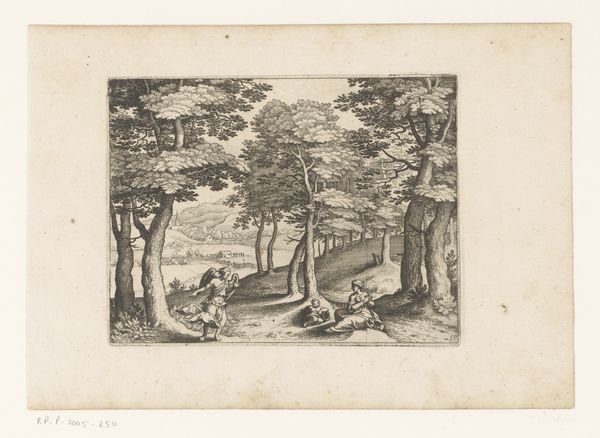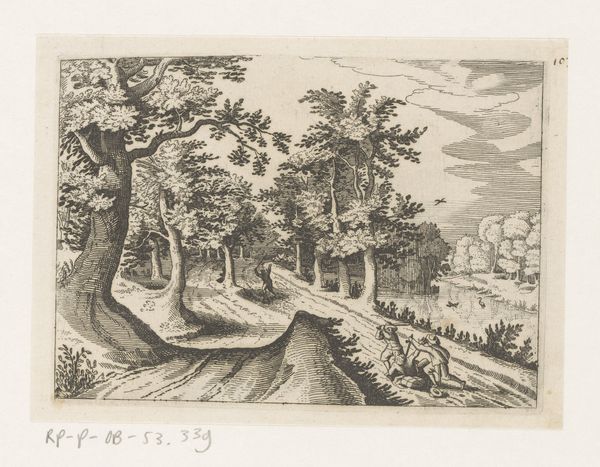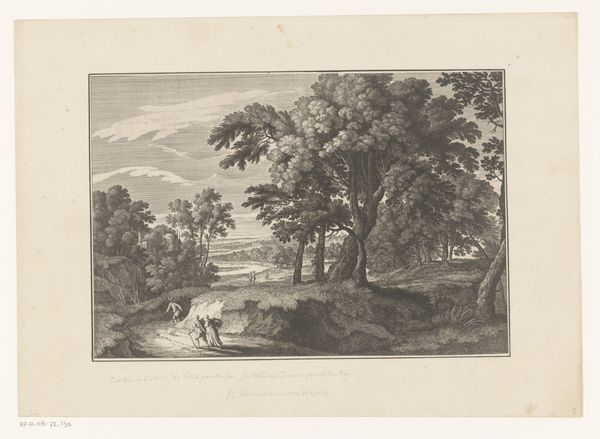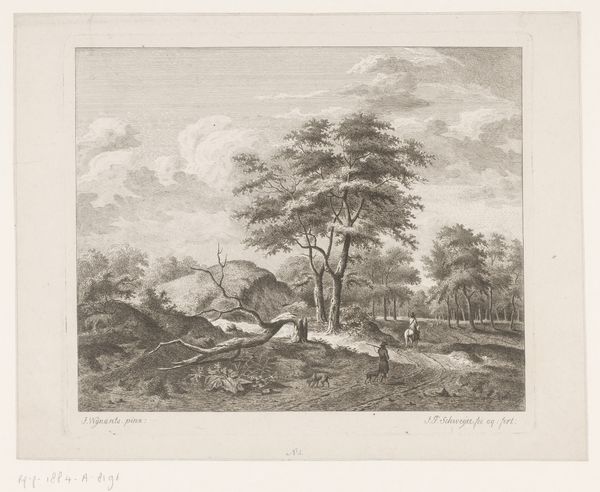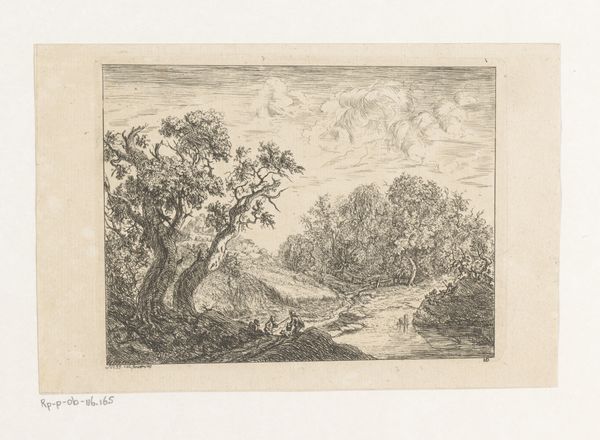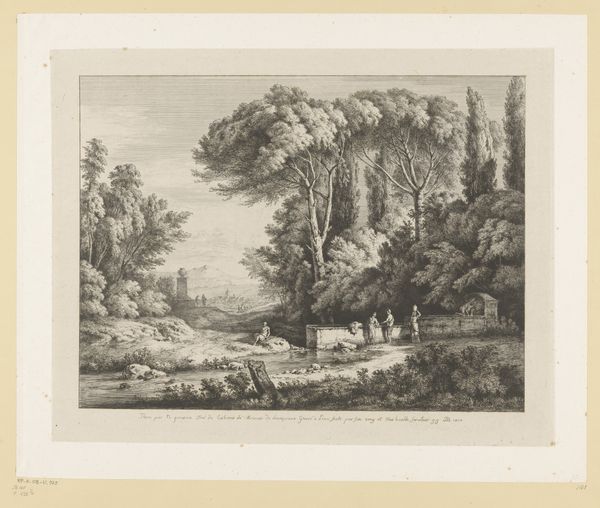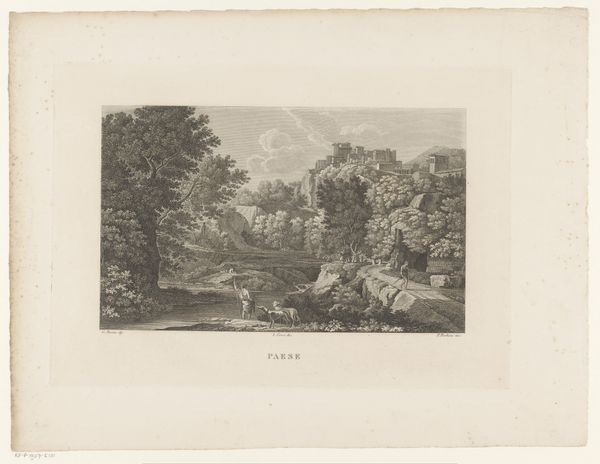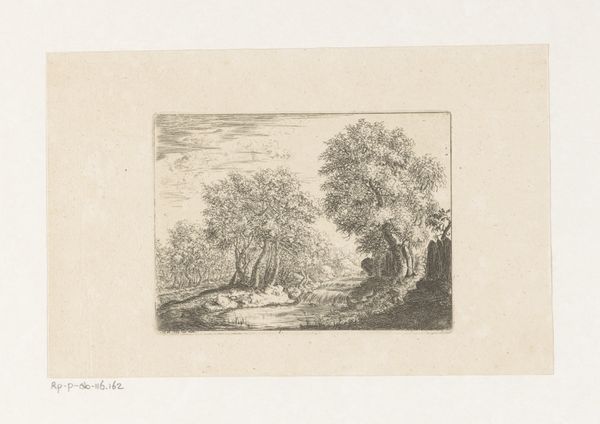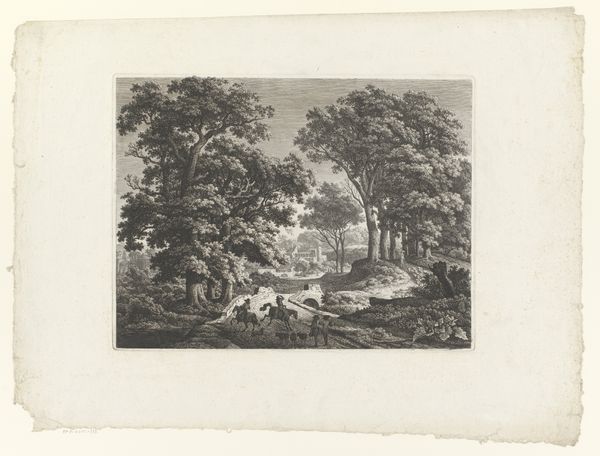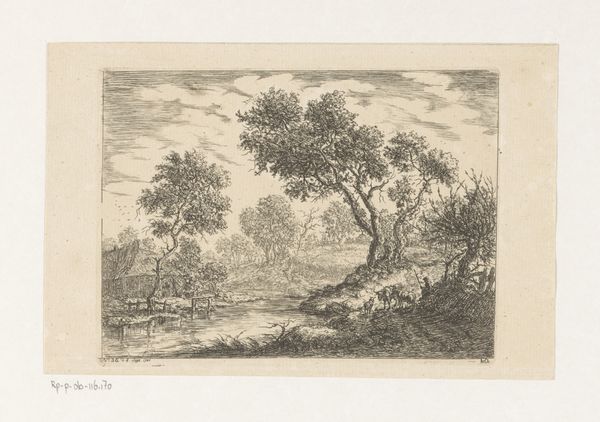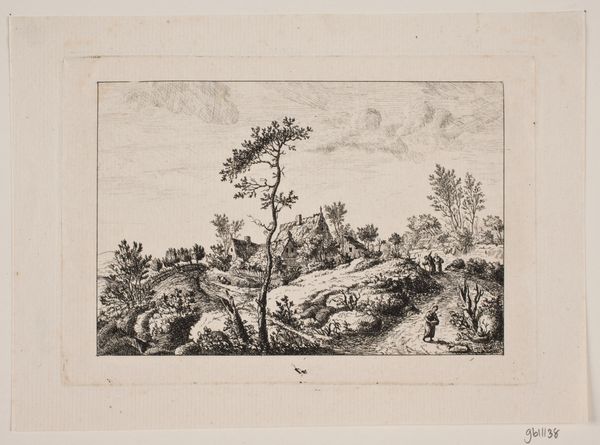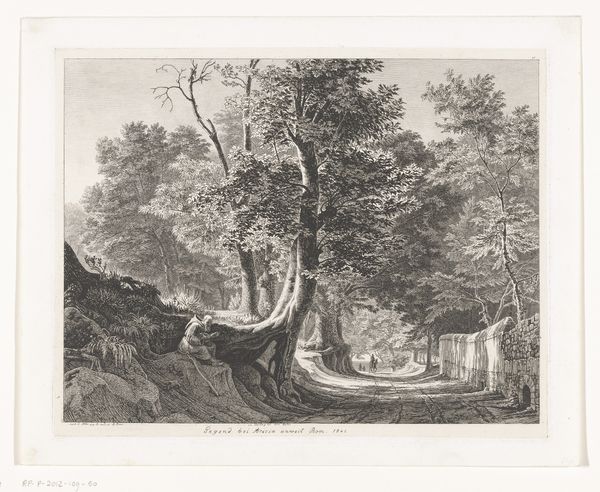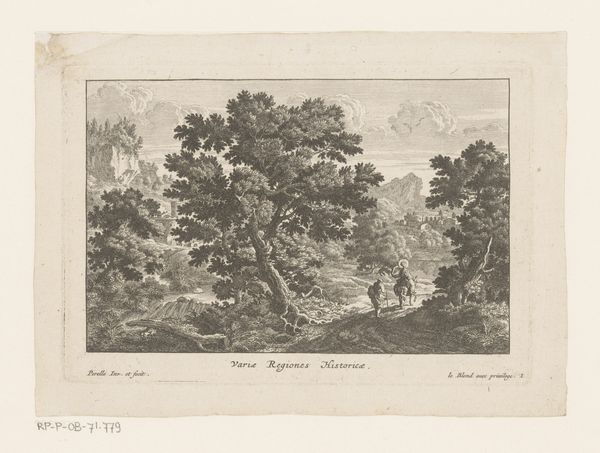
drawing, print, paper, ink, engraving
#
drawing
#
baroque
# print
#
old engraving style
#
landscape
#
river
#
paper
#
road
#
ink
#
engraving
Dimensions: height 120 mm, width 165 mm
Copyright: Rijks Museum: Open Domain
Editor: This is "Overval op een landweg," or "Highway Robbery," a 1620 print in ink on paper by Matthäus Merian. It's so detailed! What strikes me is the almost casual juxtaposition of this violent robbery happening in the foreground with this idyllic landscape stretching out behind it. What do you see in this piece? Curator: What I find interesting is to consider this print not just as an image, but as an object produced within a specific economic system. The labor involved in creating the copper plate, the paper it's printed on, the ink, even the act of distribution, these are all material processes that speak to 17th-century trade and social structures. How does knowing it was a print, a reproducible image, change your understanding of its purpose? Editor: That's a good point. Knowing it's a print makes me think about accessibility. It wasn't just for one wealthy patron; it was meant to be disseminated, maybe even mass-produced. So, was Merian making a commentary about class conflict through representing common street violence? Curator: Precisely! Think about the intended audience for this kind of print. Were they members of the merchant class perhaps, traveling those roads with valuables? How does the medium itself contribute to that commentary? Is the violence heightened because the print is easily reproducible and consumed? Editor: So, it's not just about the robbery itself, but the implications of portraying it and sharing it with a wider audience through a material like a print. The value shifts from the landscape to the event and back again depending on how the work and its materials circulated. Curator: Exactly! And consider the raw materials, like the paper. The material itself implies the artist relied on merchants and on industrial systems that turned raw materials into products like ink and paper that he needed to ply his artistic trade. Editor: That gives me a totally different perspective. It’s easy to get lost in the narrative, but thinking about the materials and their movement really grounds the artwork in its time. Thanks! Curator: Indeed. Paying attention to materiality helps reveal the unseen economic and social forces that shaped artistic production and consumption.
Comments
No comments
Be the first to comment and join the conversation on the ultimate creative platform.
